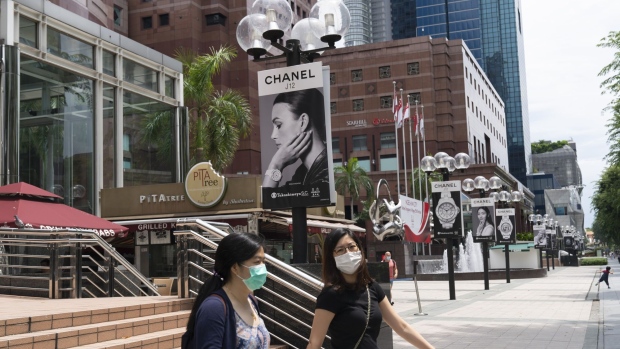Oct 16, 2020
U.S. retail sales increased in September by most in three months
, Bloomberg News

U.S. retail sales rose in September at the fastest pace in three months, topping forecasts and capping a third-quarter rebound for consumer spending that faces increasing headwinds.
The value of overall sales increased 1.9 per cent from the prior month after a 0.6 per cent gain in August, Commerce Department figures showed Friday. The median estimate in a Bloomberg survey of economists called for a 0.8 per cent gain. Excluding autos and gasoline, sales rose 1.5 per cent .
Opening Wallets
The broad-based gain -- the fifth straight increase -- likely reflects consumers tapping elevated savings and funds from temporary extra jobless benefits, while delayed back-to-school shopping may also have boosted purchases.
The economy’s rebound from the pandemic-driven downturn is threatened, though, by a new acceleration in coronavirus infections and Congress’s failure to agree on a fresh stimulus package, developments that appear to be weighing on an already-slowing labor market recovery.
While the US$600 weekly payments for jobless Americans expired in July, a temporary program authorized by U.S. President Donald Trump provided most benefit recipients about US$300 extra a week for a limited time. But funding for that program is dwindling, and the broader dropoff in payments risks a hit to future consumer spending.
“The extra US$300 kicked in a lot in September and I think that helped boost consumer spending,” said Ryan Sweet, head of monetary policy research at Moody’s Analytics Inc. “With the absence of additional fiscal stimulus we’re going to start to see spending moderate.”
U.S. stocks gained, heading for their first advance in four days.
A separate report Friday showed that U.S. manufacturing production unexpectedly declined in September, the first decrease in five months and a sign of headwinds for the industrial sector as the pandemic keeps its grip on the world’s largest economy. The 0.3 per cent drop in output at factories followed an upwardly revised 1.2 per cent gain in August, Federal Reserve data showed.
Other data showed U.S. consumer sentiment ticked up in early October to a seven-month high on an improved economic outlook, though confidence remained well below pre-pandemic levels.
Another factor at play in the strong retail sales figures could have been back-to-school shopping that was pushed into September, said Michelle Meyer, head of U.S. economics at Bank of America Corp. Supplies are typically bought through the summer, but “this year, with schools going back later, or not at all, or just some confusion as to what that would look like, it could be that people delayed those purchases,” she said.
Figures from the JPMorgan Chase Institute also showed that unemployment benefits inflated the bank accounts of unemployed Americans earlier in the year, who have been using up savings since the extra $600 expired in July.
Before Friday’s report, analysts were projecting consumer spending to have advanced at a 37.2 per cent annualized pace in the third quarter following a record 33.2 per cent drop in the prior period. Fourth-quarter gains, though, were forecast to slow to just 3.7 per cent.
What Bloomberg’s Economists Say
“Strength in a broad array of recreational goods and back-to-school categories shows a continuation of work-from-home arrangements is significantly disrupting normal seasonal patterns. Income not spent on in-person services appears to be finding an outlet elsewhere.”
--Andrew Husby and Eliza Winger
All but one of the 13 major categories increased in September, led by clothing, sporting goods and motor vehicles. The only sector to decline was electronics and appliance stores.
So-called control group sales -- which some economists see as a more reliable gauge of underlying demand -- increased 1.4 per cent from the prior month, also exceeding forecasts. That figure excludes food services, car dealers, building-materials stores and gasoline stations.
With the pandemic has also come a shift in consumption patterns. Total retail sales have surpassed their February level but several industries -- including restaurants, clothing and electronics and appliance stores -- remain below year-earlier levels. Instead, consumers are spending more at grocery stores, online vendors and building material retailers.
Excluding automobiles, retail sales rose 1.5 per cent, following 0.5 per cent in August.
While consumer goods spending on the whole has rebounded to a new high, total outlays, which include both goods and services, lag behind February levels as the pandemic continues to hamper activities such as travel. The Commerce Department will release the September figures for personal spending on Oct. 30.
Growth could moderate in the next three months “but it will still continue to make progress toward that V-shaped recovery,” Chetan Ahya, Morgan Stanley’s chief economist, said on Bloomberg Television. He expects the U.S. economy to reach pre-Covid levels by the second quarter of 2021.
--With assistance from Vince Golle, Chris Middleton, Edith Moy, Sophie Caronello and Jarrell Dillard.


